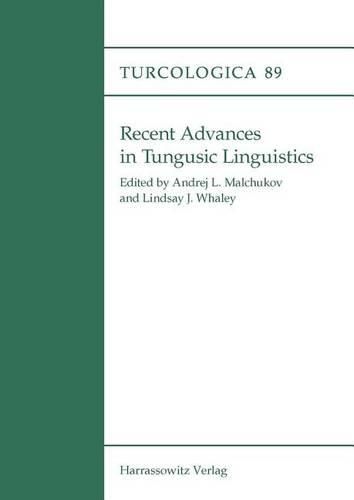Readings Newsletter
Become a Readings Member to make your shopping experience even easier.
Sign in or sign up for free!
You’re not far away from qualifying for FREE standard shipping within Australia
You’ve qualified for FREE standard shipping within Australia
The cart is loading…






The Tungusic languages are spoken across most of eastern Siberia and northern China. Because all of the Tungusic languages are endangered, the opportunity to learn more about the structures of these languages in the future will become limited. Recent Advances in Tungusic Linguistics includes invited contributions from sixteen specialists on Tungusic from all over the world. The volume presents research that is representative of the current scientific knowledge. It includes papers of a comparative orientation in the tradition of Tungusic studies, but also addresses new domains (e.g. discourse), as well as employing new methods (e.g. new possibilities of acoustic analysis in phonetic research and the use of semantic maps in morphosyntax). All essays have a typological orientation, even though they draw on the material from individual Tungusic languages. With the varied conception of this volume, the editors Lindsay J. Whaley and Andrej L. Malchukov aim at stimulating further interaction and collaboration in the domain of Tungusic studies.
$9.00 standard shipping within Australia
FREE standard shipping within Australia for orders over $100.00
Express & International shipping calculated at checkout
The Tungusic languages are spoken across most of eastern Siberia and northern China. Because all of the Tungusic languages are endangered, the opportunity to learn more about the structures of these languages in the future will become limited. Recent Advances in Tungusic Linguistics includes invited contributions from sixteen specialists on Tungusic from all over the world. The volume presents research that is representative of the current scientific knowledge. It includes papers of a comparative orientation in the tradition of Tungusic studies, but also addresses new domains (e.g. discourse), as well as employing new methods (e.g. new possibilities of acoustic analysis in phonetic research and the use of semantic maps in morphosyntax). All essays have a typological orientation, even though they draw on the material from individual Tungusic languages. With the varied conception of this volume, the editors Lindsay J. Whaley and Andrej L. Malchukov aim at stimulating further interaction and collaboration in the domain of Tungusic studies.